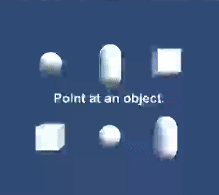Week 6: 23 - 30 March [Plane Detection, GPS, User Movement]
After having implemented a physically static scene,
triggered upon recognition of a database image, to increase the applications
interactive potential I began the week by continuing to research how to
generate a 3D model relative to world space the user can physically walk around
and interact with.
This implementation would also allow multiple users to use
the application independently, at the same time, without the need to crowd
around a single database image or mass produce many images.
While as a group we had played with the idea of adding image
detection to leaflets, any images and virtual buttons used would need to be the
maximum rating for recognition, at the same time as having a suitable layout
for the museum’s needs. Both of which may interfere with existing plans of the
museum.
Ground Plane Detection
Vuforia heavily advertise ground plane detection as one of
their powerful assets. From the resources made available online I learnt the
platform offers object permanence, relative to real world position.
The device will recognise a horizontal surface, use that surface
and surrounding features to define a location, then as the device’s perspective
moves relative to these features, the instantiated model will move by the same
amount.
After attempting to recreate the guided example multiple
times I referred to the Vuforia documentation. Unfortunately, this feature is currently
only supported by Samsung Galaxy S7 or newer, and iPhone 6 or newer. This meant
having to borrow a device to build test builds too, limiting my access for
developing the method.
I tested the scene on S7 and S8 devices, with varying
degrees of success. The ground plane must remain in view of the device camera
at all times for accurate tracking. If line of sight is lost, the object will
move relative to the device view.
An anomaly I did notice while testing was how battery life
of the phone affected the performance. As soon as either device entered
critical battery, any plane detection would fail and be permanently lost until
recharged, regardless of other factors.
Until this point all tests had been carried out with a small
model, to confirm functionality. I moved on to testing a life-size model but
found that testers immediately would love plane tracking.
To achieve a suitable scale where the airship gondola
allows the user to walk through results in the main compartment of the airship
being a significant distance off the ground. This made every playtester look
up, losing the plane. If the user does not have the ground plane in view of the
device camera when moving, the position of the airship will remain relative to
the device, not the world.
Using this method for a model of this size requires a
large space (without walls) so the user can approach it and interact while
keeping the ground in view. Because we are yet to have seen the event location,
as well as the prohibitive need for a Samsung galaxy to use this feature - I
will revert to using my earlier implementation of using the device GPS position
relative to the model, to give all attendees the same opportunity to experience
the application.
 |
| Early implementation of GPS data to move airship, erratic spike in distance value loses ship. |
GPS Based Model Position
Building
on my earlier implementation of GPS positioning I attempted to remove the
erratic variables which often interfere with moving the airship smoothly. I
implemented a basic algorithm to take the average of the incoming data values,
then overwrite the existing value when within a suitable tolerance.
This
has improved the reliability of the method, though significant spikes in data
still persist.
Limiting Instantiate Objects
Occasionally the instantiated model would be lost. Either
the tester would walk too far in a particular direction and not want to return
to the starting location, or an erratic GPS reading would push the airship out
of view.
There were also occurrences where a player would instantiate
many airship models in very close proximity, making the scene practically unusable.
To overcome these issues, I edited one of the supplied
Vuforia scripts which spawns models on user tap to first check whether another
model was already instantiated and if yes, delete it when creating a new one.
Testers responded well to this addition, seeming to find the
control intuitive as no explanation was requested.
References:
- Library.vuforia.com. (2018). Ground Plane User Guide. [online] Available at: https://library.vuforia.com/articles/Training/ground-plane-guide.html [Accessed 27 Apr. 2018].
- Library.vuforia.com. (2018). Introduction to Ground Plane in Unity. [online] Available at: https://library.vuforia.com/articles/Solution/ground-plane-guide.html [Accessed 27 Mar. 2018].
- Technologies, U. (2018). Unity - Scripting API: LocationService.Start. [online] Docs.unity3d.com. Available at: https://docs.unity3d.com/ScriptReference/LocationService.Start.html [Accessed 28 Mar. 2018].
- Vaughan-Nichols, S. (2018). How Google--and everyone else--gets Wi-Fi location data | ZDNet. [online] ZDNet. Available at: https://www.zdnet.com/article/how-google-and-everyone-else-gets-wi-fi-location-data/ [Accessed 28 Mar. 2018].


Comments
Post a Comment